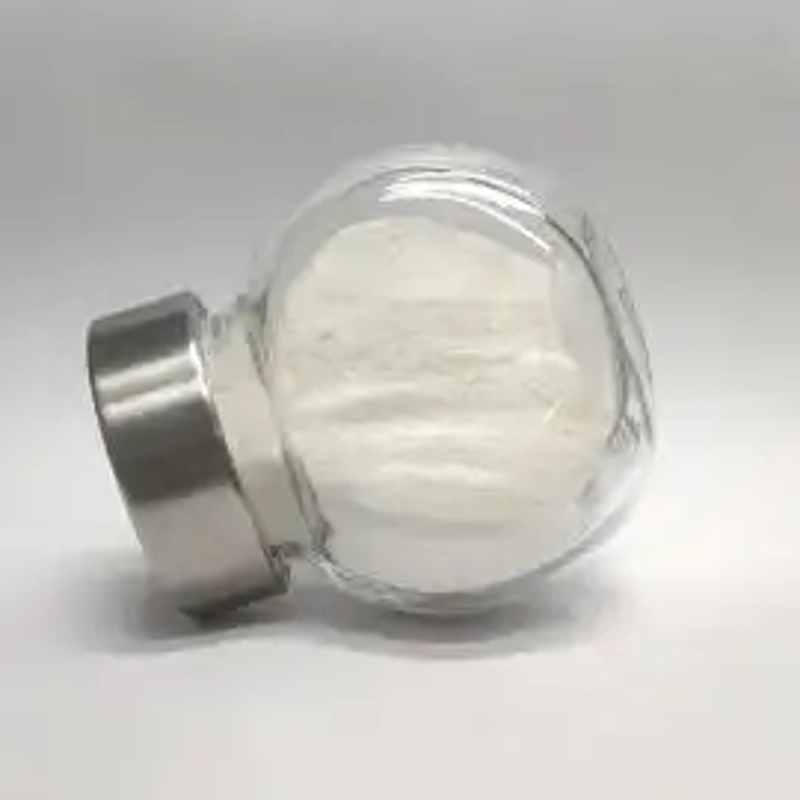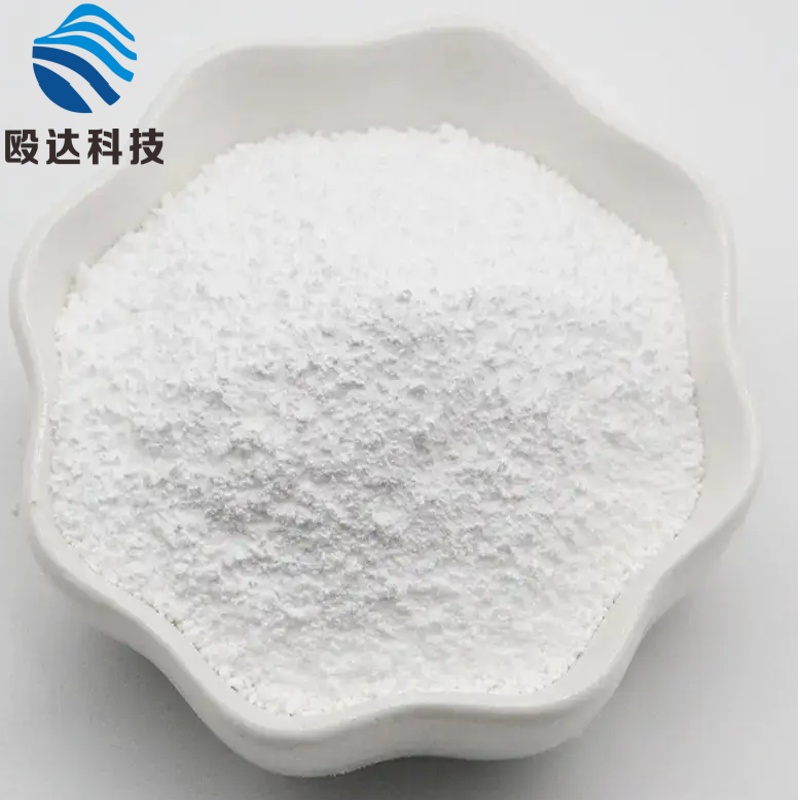[technical article] quality control of online red rust monitoring system in water for injection system
-
Last Update: 2018-08-17
-
Source: Internet
-
Author: User
Search more information of high quality chemicals, good prices and reliable suppliers, visit
www.echemi.com
The formation of red rust in the water for injection system in the pharmaceutical industry, the water for injection system is used to continuously provide high-purity and high-quality water for the experimental and production fields Generally speaking, WFI is produced by distillation of WFI machine and stored in WFI storage tank after heating In order to prevent microbial growth, the WFI system needs to be continuously circulated in closed loop at > 70 ℃ The pipe network is generally made of 316L stainless steel or austenitic stainless steel of the same grade, and the centrifugal pump is selected as the power device of the injection water cycle Due to the strict quality requirements of water for injection, a series of on-line continuous monitoring units are usually installed in the water for injection system, which can timely report the abnormal indicators in the system and take corresponding measures It includes: temperature measurement unit, flow measurement unit, pressure measurement unit, conductivity measurement unit, TOC However, in recent years, the phenomenon of red rust produced by the water for injection system has been paid attention to Generally, the system consists of 316L After the formation of red rust, the formation and diffusion of these heavy metal oxide (iron oxide) particles in the injection water system lead to the pollution of the injection water quality, which can not be detected by the above-mentioned online monitoring devices It can be seen from the experiment that the formation of red rust and the migration of red rust particles can not be detected by conductivity test At present, the main method to identify the red rust phenomenon of the system is visual inspection (such as endoscopy) Through visual inspection, it can be found that the local red rust film attached to the pipe wall or the red rust deposit on the diaphragm valve gasket However, the premise of visual inspection is to shut down the system and remove the corresponding pipe fittings This method is difficult to be satisfied by time, efficiency and other factors A) when the WFI system is heated, the temperature rise can cause the change of WFI: a the decrease of gas solubility - which results in the decrease of dissolved oxygen level of WFI; B the obvious increase of hydrolysis dissociation → H + + OH - or H 3.. O + OH - these changes have a profound impact on the destruction of Cr 2O 3 passivation protective layer and the formation of Fe 2O 3 secondary layer Chromium and oxygen preferentially generate chromium oxide instead of chromium hydroxide, while iron, on the contrary, preferentially generate ferrous hydroxide, which is easy to dehydrate and then form iron oxide, namely red rust B) composition change corresponding to red rust: from the above two figures, it can be seen that the CR / Fe ratio in the range of 1.5-2.0 is an ideal state With the increase of temperature, the CR / Fe ratio begins to decline obviously at about 40 ℃, and reaches a "qualitative change" at about 60 ℃, that is, the CR / Fe ratio is 1 However, after entering the operating temperature range of WFI, the specific pressure drop began to slow down and maintained at a low level of 0.3 When the CR / Fe ratio is greater than 1.5, the surface of stainless steel pipe wall has chromium rich protective layer When the CR / Fe ratio is lower than 0.5, the red rust layer adheres to the original damaged chromium rich layer Generally, in the operating temperature range of WFI, the formation rate of iron oxide is very low Under the influence of the formation mechanism of red rust, the following reactions may occur in the system: the above description provides an explanation for the irreversible change of the surface of the tube wall from the chromium rich protective layer to the iron oxide secondary layer from the thermokinetic angle Although the solubility of iron oxide (Fe2O3, Fe3O4) in water is very low, the solubility of iron hydroxide and ferrous hydroxide is higher than that of iron oxide, and the iron hydroxide dissolves in (injection) water and flows with it, which provides the possibility of diffusion after the formation of red rust The formation of red rust changed the structure of passivation film on the initial stainless steel pipe wall to a great extent The secondary layer of iron oxide with permeability and corrosiveness was attached to the stable chromium oxide passivation protective layer which was impermeable This figure vividly shows the change of the surface of the pipe wall after the formation of red rust The surface of the stainless steel pipe wall after the electric plane has a chromium rich protective layer, with a thickness of 2.5nm and a chromium iron ratio of more than 1.5 When it is applied in the water for injection, the chromium iron ratio is reduced to less than 0.5 The red rust layer is attached to the original damaged chromium rich layer, with a thickness of 10-1000nm! ESCA photoelectron spectroscopy and Auger electron spectroscopy were used to analyze the secondary layer of red rust The layer is mainly composed of bivalent iron and trivalent iron oxide particles which are very difficult to dissolve in water In addition, a certain amount of chromium, nickel and molybdenum elements were also found in the secondary layer According to the research so far, the particle size distribution of red rust secondary layer is between 0.01 and 5 μ m, so it is visible These particles can be qualitatively and quantitatively analyzed by filters or precise measurements such as laser particle counters In general, the content of these particles in water for injection is 30-60 mg / L Although these data are far from the lower limit of pollution index specified in USP 26, the monitoring of these data is still very important The cognitive concept of red rust when realizing that red rust does appear in the system, it can be assumed that the initial chromium rich passivation film of the system (after new construction / reconstruction / overhaul) contacts with the fluid medium As time goes on, the chemical dynamic equilibrium of this ideal initial passivation film is gradually disintegrated, the protective layer is gradually destroyed, and the secondary layer of iron oxide is formed This process is often accompanied by a series of changes in the performance of the inner surface of the tube wall: the surface color changes from colorless and transparent to reddish brown; the conductivity and resistance of the tube wall change qualitatively; the surface morphology changes; the surface micro morphology changes; the surface optical reflection characteristics change; the corrosion resistance decreases; the local potential changes Based on these changes, the red rust monitoring system should be included in the list of necessary detection units of the water for injection system The equipment has the functions of identifying the above changes and making the process of red rust generation describable In view of the formation mechanism of red rust mainly affected by temperature can be understood as: the slow disintegration of chromium rich passivation layer, the formation of iron oxide secondary layer and the final formation of red rust particles overall corrosion layer, we can assume that the formation and migration of red rust particles (with great harm) is based on the formation of iron oxide secondary layer Therefore, it is very valuable for the detection equipment which can display the whole formation mechanism in time and accurately to help formulate response strategies at a good time It can be seen from the above figure that the initial thickness of the passivation film of stainless steel is 1.5-2nm, and the CR / Fe ratio is greater than 1; as time goes on, the thickness of the chromium rich layer becomes thinner, and when the operation time is about 5 months, it is gradually less than 1nm, and the CR / Fe ratio slightly decreases, but it is still greater than 1; (the actual occurrence period is 5-12 months); the operation time is about 6 At 8 months, the chromium oxide film on the surface of stainless steel basically disappeared, forming independent chromium oxide and iron oxide composition, and the secondary layer of iron oxide began to form, and the ratio of chromium to iron was 1; at 8 months, the thickness of the secondary layer reached 1nm With the accumulation of iron oxide and the shear stress between the pipe wall surface and the fluid, visible macro iron oxide particles began to appear, with the CR Fe ratio less than 1; (the actual occurrence period is 8-18 months) running to 12 months, the red rust particles have a certain amount of distribution and migration, the thickness of the red rust secondary layer reached 10 nm, and the CR Fe ratio less than 1 The above-mentioned process chart of red rust formation and migration is realized by particle counting and filtering technology However, particle counter can only provide data information about the number of particles, and can not provide information about the types, properties and components of particles Residual filtering technology can help to distinguish particle types (such as iron oxide particles and silicon element particles) With the help of the above monitoring and measurement methods, it is possible to detect the formation of red rust, determine the formation time of red rust particles and make effective response strategies in time Therefore, we believe that the red rust monitoring system should be included in the ranks of the necessary detection units of the water for injection system to provide real-time monitoring for the generation of red rust and confirm the rust removal cycle of the system, so as to avoid quality accidents caused by water quality pollution of the water for injection
This article is an English version of an article which is originally in the Chinese language on echemi.com and is provided for information purposes only.
This website makes no representation or warranty of any kind, either expressed or implied, as to the accuracy, completeness ownership or reliability of
the article or any translations thereof. If you have any concerns or complaints relating to the article, please send an email, providing a detailed
description of the concern or complaint, to
service@echemi.com. A staff member will contact you within 5 working days. Once verified, infringing content
will be removed immediately.







